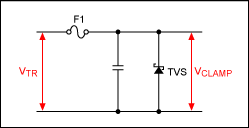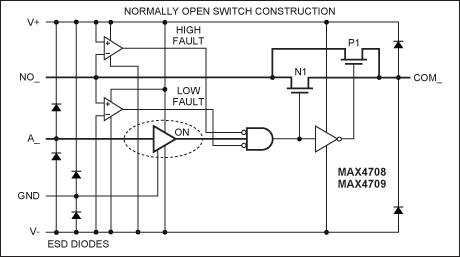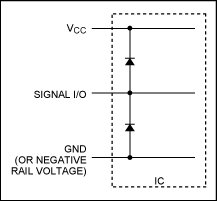Design Considerations for a Harsh Industrial Environment
Abstract
This article discusses factors that influence the robustness of a circuit in a harsh environment, like you would find for industrial applications. The topics covered include ways to handle voltage transients and to protect against electrostatic discharge (ESD) and faults. The MAX4708 family of fault-protected multiplexers and the MAX14770E PROFIBUS transceiver are featured.
A similar version of this article appeared in the November 11, 2011 issue of ECN magazine.
Introduction
Semiconductor (IC) robustness—what is the operating temperature range? How is high electrical noise handled? What about ESD and fault protection? These issues are not necessarily the first things that a design engineer thinks about when selecting an IC. Nonetheless, robustness is a key performance parameter for long-term operation and a reliable, reputable end product. This is especially true when designing a system for an industrial environment where harsh operating conditions are common. Industrial equipment can be exposed to a wide range of temperatures, high electrical noise on either the power-supply lines or data lines, and fault events like ESD or short circuits.
Today the de facto temperature standard for ICs in an industrial environment is -40°C to +85°C, an "extended" +15°C higher than the standard -40°C to +70°C temperature range of years ago. The industry trend is for ever-higher temperature operation, and eventually the new expectation will be the -40°C to +125°C of the automotive industry. Higher current and power densities make it apparent that IC companies must design circuits to withstand a wider temperature range... or be left out of the decision process.
Handling Voltage Transients
Voltage transients often appear on power-supply lines because of incorrect wiring or accidental shorts. If the inputs are not protected, these transients can damage downstream circuitry. A simple and discreet circuit comprised of a series fuse with a transient-voltage suppressor (TVS) diode has traditionally been used to protect against most voltage transients (Figure 1).

Figure 1. Transient voltage-protection circuit using discreet components.
Transient protection using discreet components, however, has its own limitations. The protection threshold on the TVS diode is often not well controlled and can vary dramatically over temperature. Also, the fuse needs to be replaced after an overvoltage condition occurs. Finally, large transients require large TVS diodes which consume board space and dissipate additional heat.
A more controlled approach to manage overvoltage and transient events is to integrate the protection threshold and reaction circuitry into an IC. To ensure a reliable response every time, internal comparators and diodes are designed into a number of supervisory and protection ICs. Some ICs incorporate high-voltage fault protection for data lines. To protect itself from damage, a fault-protected device will latch up when the normal data-line voltage levels are exceeded. One example of this is the MAX4708 family of multiplexers. The MAX4708/MAX4709 includes two fault detectors: one high-side detector for NO_ voltages above the positive rail (V+), and one low-side detector for NO_ voltages below the negative rail (V-) (Figure 2). A fault condition occurs when the voltage at NO_ exceeds either supply rail and, at this point, the N1 and P1 FETS are both turned off. This approach quickly disconnects the input and output of the switch when a fault condition occurs.

Figure 2. Functional diagram of the MAX4708/MAX4709.
Voltage transients in data systems can also be managed with RS-485 transceivers. The receiver input and driver output of an RS-485 transceiver may be exposed to significantly higher voltages than the -7V to +12V common-mode range specified in the EIA/TIA-485 standard for an industrial system. Newer transceivers have been designed to withstand these overvoltage events and now can even withstand up to ±80V (with respect to ground) without damage. This state-of-the-art technology ensures robust protection and operational longevity.
Protecting Against ESD and Faults
Integrated ESD circuitry protects an IC from damaging ESD events and helps to make the overall system more robust.
Electrostatic discharge (ESD), another overvoltage event, occurs when two materials with different electrical potentials make contact, transfer stored static charges, and generate a spark. ESD sparks are often produced by the interaction of people with their surroundings. These inadvertent sparks can change the properties of a semiconductor device, degrade or destroy it entirely. ESD is a serious industrial problem estimated to cause billions of dollars in damages annually. ESD events that occur in the field cause individual component failure and sometimes catastrophic system failures.
External ESD diodes and other types of discreet component circuits can be used to protect data lines. Many IC devices integrate some degree of ESD protection and require no further external protection for the IC itself. Figure 3 shows a very simplified functional diagram of a common integrated protection scheme. Voltage spikes at the signal input/output (I/O) are clamped to VCC or GND and protect the internal circuitry. Many interface products and analog switches integrate ESD protection designed to comply with IEC 1000-4-2 standards. Of note, Analog Devices recently achieved an ESD human body model (HBM) level of ±35kV on its PROFIBUS RS-485 transceiver, the MAX14770E.

Figure 3. Simplified integrated ESD protection circuitry.
Conclusion
Although robustness covers a disparate group of design issues from operating temperature range, to fault and line protection, to ESD and short circuits, it is not usually the first thing that a design engineer addresses. That could be a serious mistake. Applications in the industrial market require robust parts to withstand the harsh environments that come with territory. Robustness should be considered early in the design phase for these applications.